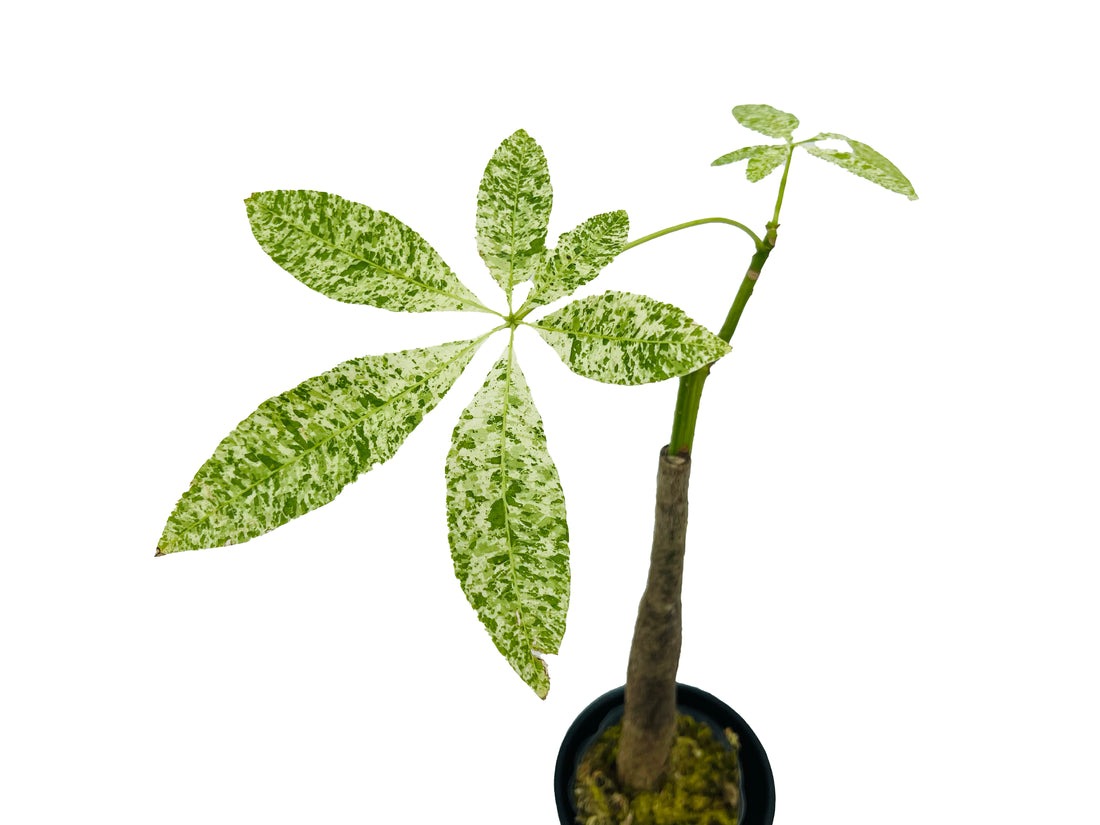In the realm of indoor plants, few have captured the imagination and curiosity of enthusiasts quite like the Pachira Aquatica, commonly known as the Money Tree. This captivating plant, with its unique braided trunk and vibrant green leaves, has become a symbol of prosperity and good fortune in various cultures around the world. In this exploration, we delve into the intriguing world of the Money Tree Pachira Aquatica, examining its origins, care requirements, cultural significance, and the symbolism that has made it a popular choice for homes and offices.
Origin and Botanical Characteristics:
The Pachira Aquatica, native to the wetlands of Central and South America, is a member of the Malvaceae family. This tropical plant, also known as Malabar chestnut, Guiana chestnut, or saba nut, thrives in humid conditions and is characterized by its distinctive features. The most recognizable aspect is its braided or twisted trunk, which is believed to contribute to the plant's auspicious symbolism. The glossy, hand-shaped leaves add to its aesthetic appeal, creating a lush and vibrant appearance.
Cultural Significance and Symbolism:
The Money Tree's association with prosperity and good luck has deep roots in various cultural and religious traditions. Feng Shui, the ancient Chinese art of harmonizing individuals with their surroundings, regards the Money Tree as an auspicious symbol of wealth and prosperity. According to Feng Shui principles, the five leaves on each stem represent the five elements – wood, water, metal, fire, and earth – fostering a harmonious balance in the environment.
In many Asian cultures, the Money Tree is believed to attract positive energy and financial success. The idea is that placing the plant in specific areas of the home or office can enhance wealth and abundance. While its popularity in Asia is well-established, the Money Tree has also found its way into Western cultures, where it is often chosen as a decorative element to bring good fortune and positive energy.
Care and Maintenance:
The allure of the Money Tree extends beyond its symbolism, as it is renowned for being a relatively low-maintenance plant. Cultivating a healthy and thriving Money Tree requires attention to a few key factors:
- Light: Money Trees prefer bright, indirect light but can adapt to lower light conditions. Placing them near a window with filtered sunlight is ideal.
- Watering: Overwatering can lead to root rot, so it's essential to let the top inch of the soil dry out before watering. Ensure proper drainage to prevent waterlogged soil.
- Temperature and Humidity: Pachira Aquatica thrives in warm and humid conditions. While it can tolerate average room temperatures, it benefits from higher humidity levels.
- Soil: Well-draining, lightweight potting soil is recommended to prevent water stagnation and provide essential nutrients.
- Fertilization: During the growing season (spring and summer), a balanced liquid fertilizer applied every 4-6 weeks can help promote healthy growth.
The Money Tree's resilience and adaptability make it an excellent choice for both experienced and novice plant enthusiasts.
Decorative Uses:
Beyond its cultural and symbolic significance, the Money Tree has gained popularity for its aesthetic appeal. The braided trunk and lush foliage make it a stylish addition to various indoor spaces. Its ability to thrive in pots and containers of different sizes makes it suitable for homes, offices, and even commercial spaces.
Many interior designers appreciate the Money Tree for its versatility, as it complements a range of decor styles. Its vibrant green leaves add a touch of nature to contemporary settings, while the braided trunk lends a unique and artistic element to more traditional spaces.
In corporate environments, the Money Tree is often chosen not only for its visual appeal but also for the positive energy it is believed to bring. Placing a Money Tree in offices or reception areas is thought to enhance the overall atmosphere, fostering a sense of well-being and prosperity among employees and clients.
Conclusion:
The Money Tree, with its captivating appearance and rich symbolism, has carved a niche for itself in the world of indoor plants. Whether chosen for its cultural significance, symbolic meaning, or decorative charm, the Pachira Aquatica has become a beloved companion in homes and workplaces worldwide. Visit the official website beleaftropicals.com

